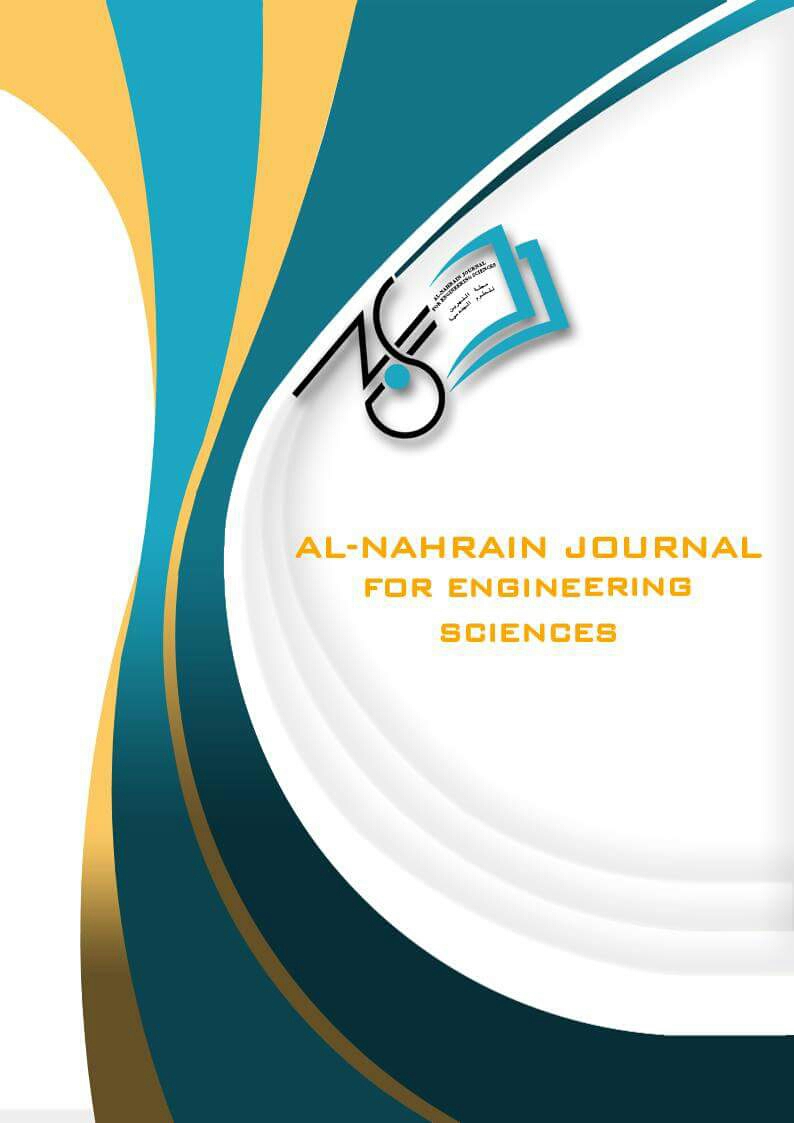Fabrication of Antimicrobial Hydrogel Using Biodegradable Blended Materials for Skin Applications
DOI:
https://doi.org/10.29194/NJES.26040292Keywords:
Hydrogels, Wound Healing, Antimicrobial, FTIR, Tensile Test, WettabilityAbstract
Biodegradable polymers are very useful polymers in biomedical applications. In this research, several hydrogels were fabricated by using two polymers, Polyvinyl alcohol (PVA) and Chitosan (Chs) by the solvent casting method in order to use them for skin applications. Several tests were carried out on these membranes such as Agar diffusion method to examine their antimicrobial activities, Fourier transform infrared microscopy (FTIR) test to study the differences in their chemical structures. Uniaxial tensile test was performed to examine the mechanical characteristics of these membranes. In addition, the wettability test was used to investigate the hydrophobicity or hydrophilicity of the surfaces. The results showed that all membranes are hydrophilic, of which the contact angles are less than 90°. The membrane manufactured from 75:25 Chs-PVA is more hydrophobic (contact angle is 74°) than other membranes made of 50:50 Chs-PVA and 25:75 Chs-PVA as the contact angles were 59° and 61°, respectively. The tensile test results indicate that the membrane fabricated of the PVA and the membrane that was fabricated by 75% Chs and 25% PVA has the highest tensile strength of 17.9 MPa, 16.2 MPa and Young^’ s Modulus of 181.2 MPa and 7.18 MPa, respectively. The highest strain at break was observed by the membrane of 25:75 Chs-PVA which equals to 24.67%. Chitosan membranes showed inhibition zones of about 2.99 cm and 2.75 cm in length, and 75:25 Chs-PVA membranes showed 5.1 and 5.91 cm in length for E.coli. To sum up, this copolymer is considered as promising hydrogel for skin applications such as wound dressing.
Downloads
References
Chandra, R. and R. Rustgi, Biodegradable polymers. Progress in polymer science, 1998. 23(7): p. 1273-1335.
Nair, L.S. and C.T. Laurencin, Biodegradable polymers as biomaterials. Progress in polymer science, 2007. 32(8-9): p. 762-798.
Ikada, Y. and H. Tsuji, Biodegradable polyesters for medical and ecological applications. Macromolecular rapid communications, 2000. 21(3): p. 117-132.
Escobar-Sierra, D.M. and Y.P. Perea-Mesa, Manufacturing and evaluation of Chitosan, PVA and Aloe Vera hydrogels for skin applications. Dyna, 2017. 84(203): p. 134-142.
Yang, J.M., W.Y. Su, and M.C. Yang, Evaluation of chitosan/PVA blended hydrogel membranes. Journal of Membrane Science, 2004. 236(1-2): p. 39-51.
Baghaie, S., et al., Wound healing properties of PVA/starch/chitosan hydrogel membranes with nano Zinc oxide as antibacterial wound dressing material. Journal of Biomaterials Science, Polymer Edition, 2017. 28(18): p. 2220-2241.
Shamloo, A., et al., Fabrication and evaluation of chitosan/gelatin/PVA hydrogel incorporating honey for wound healing applications: An in vitro, in vivo study. International Journal of Pharmaceutics, 2021. 592: p. 120068.
Qing, X., et al., Preparation and properties of polyvinyl alcohol/N–succinyl chitosan/lincomycin composite antibacterial hydrogels for wound dressing. Carbohydrate Polymers, 2021. 261: p. 117875.
Bahjat, H.H., et al., Magnetic field-assisted laser ablation of titanium dioxide nanoparticles in water for anti-bacterial applications. Journal of Inorganic and Organometallic Polymers and Materials, 2021. 31(9): p. 3649-3656.
Khashan, K.S., et al., Anticancer activity and toxicity of carbon nanoparticles produced by pulsed laser ablation of graphite in water. Advances in Natural Sciences: Nanoscience and Nanotechnology, 2020. 11(3): p. 035010.
Jihad, M.A., et al., Polyethylene glycol functionalized graphene oxide nanoparticles loaded with nigella sativa extract: a smart antibacterial therapeutic drug delivery system. Molecules, 2021. 26(11): p. 3067.
Correa, M.G., et al., Antimicrobial metal-based nanoparticles: a review on their synthesis, types and antimicrobial action. Beilstein journal of nanotechnology, 2020. 11(1): p. 1450-1469.
Cheedarala, R.K. and J.I. Song, Moderately transparent chitosan-PVA blended membrane for strong mechanical stiffness and as a robust bio-material energy harvester through contact-separation mode TENG. Frontiers in Nanotechnology, 2021. 3: p. 667453.
Kodjikian, L., et al., Bacterial adherence of Staphylococcus epidermidis to intraocular lenses: a bioluminescence and scanning electron microscopy study. Investigative ophthalmology & visual science, 2003. 44(10): p. 4388-4394.
Khorasani, M.T., et al., Design and optimization of process parameters of polyvinyl (alcohol)/chitosan/nano zinc oxide hydrogels as wound healing materials. Carbohydrate polymers, 2019. 207: p. 542-554.
Zhang, Y., et al., Novel lignin–chitosan–PVA composite hydrogel for wound dressing. Materials Science and Engineering: C, 2019. 104: p. 110002.
Downloads
Published
Issue
Section
License
Copyright (c) 2024 Lina Abdallah, Alaa Ayyed

This work is licensed under a Creative Commons Attribution-NonCommercial 4.0 International License.
The authors retain the copyright of their manuscript by submitting the work to this journal, and all open access articles are distributed under the terms of the Creative Commons Attribution-NonCommercial 4.0 International (CC-BY-NC 4.0), which permits use for any non-commercial purpose, distribution, and reproduction in any medium, provided that the original work is properly cited.














